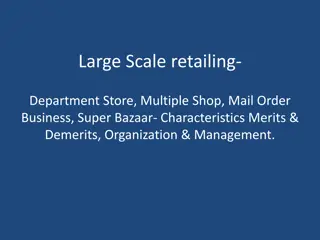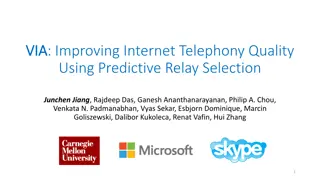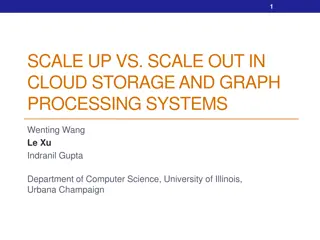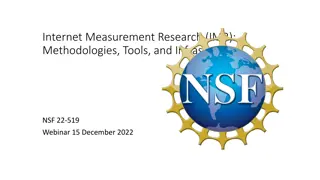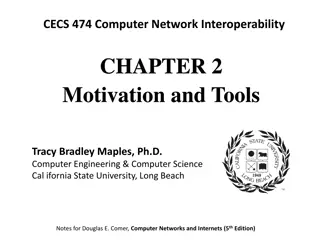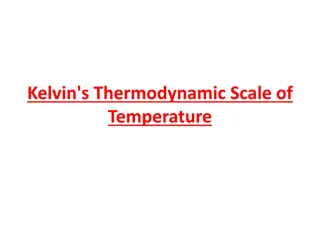End-to-End Performance Analysis of Large-Scale Internet Services
In this analysis, Chunxu Tang delves into the complexity arising from scale heterogeneity in the performance of large-scale internet services. The Mystery Machine, an end-to-end performance analysis framework, uncovers insights from user initiation to page rendering. UberTrace unifies logging systems at Facebook, enhancing performance tracing. The causal model and critical path analysis of The Mystery Machine provide a structured approach to quantifying performance anomalies. Algorithms behind hypothesis generation and rejection drive this methodical exploration of performance analysis.
Download Presentation

Please find below an Image/Link to download the presentation.
The content on the website is provided AS IS for your information and personal use only. It may not be sold, licensed, or shared on other websites without obtaining consent from the author.If you encounter any issues during the download, it is possible that the publisher has removed the file from their server.
You are allowed to download the files provided on this website for personal or commercial use, subject to the condition that they are used lawfully. All files are the property of their respective owners.
The content on the website is provided AS IS for your information and personal use only. It may not be sold, licensed, or shared on other websites without obtaining consent from the author.
E N D
Presentation Transcript
Trace Analysis Chunxu Tang
The Mystery Machine: End-to-end performance analysis of large-scale Internet services
Introduction Complexity comes from Scale Heterogeneity
Introduction (Cont.) End-to-end: From a user initiates a page load in a client Web browser, Through server-side processing, network transmission, and JavaScript execution, To the point client Web browser finishes rendering the page.
Introduction (Cont.) UberTrace End-to-end request tracing Mystery Machine Analysis framework
UberTrace Unify the individual logging systems at Facebook into a single end-to-end performance tracing tool, dubbed UberTrace.
UberTrace (Cont.) Log messages contain at least: 1. A unique request identifier. 2. The executing computer. 3. A timestamp that uses the local clock of the executing computer. 4. An event name. 5. A task name, where a task is defined to be a distributed thread of control.
The Mystery Machine Procedure: Create a causal model Find the critical path Quantify slack for segments not on the critical path Identify segments that are correlated with performance anomalies.
Causal Relationships Model Happens-before (->) Mutual exclusion ( ) Pipeline (>>)
Algorithms 1. Generate all possible hypotheses for causal relationships among segments. The execution interval between two consecutive logged events for the same task. 2. Iterate through traces and rejects a hypothesis if it finds a counterexample in any trace.
Analysis Critical path analysis The critical path is defined to be the set of segments for which a differential increase in segment execution time would result in the same differential increase in end-to-end latency.
Analysis (Cont.) Slack Analysis Slack is the amount by which the duration of a segment may increase without increasing the end-to-end latency of the request, assuming that the duration of all other segments remains constant.
Towards General-Purpose Resource Management in Shared Cloud Services
Introduction Challenges of resource management Bottleneck on hardware or software Ambiguous which user is responsible for system load Tenants interfere with internal system tasks Resource requirements vary Unpredictable which machine execute a request and how long Goals Effective Efficient
Resource Management Design Principles Observation: Multiple request types can contend on unexpected resources. Principles: Consider all request types and all resources in the system.
Resource Management Design Principles (Cont.) Observation: Contention may be caused by only a subset of tenants. Principle: Distinguish between tenants.
Resource Management Design Principles (Cont.) Observation: Foreground requests are only part of the story. Principle: Treat foreground and background tasks uniformly.
Resource Management Design Principles (Cont.) Observation: Resource demands are very hard to predict. Principle: Estimate resource usage at runtime.
Resource Management Design Principles (Cont.) Observation: Requests can be long or lose importance. Principle: Schedule early, schedule often.
Retro Instrumentation Platform Tenant abstraction End-to-End ID Propagation Automatic Resource Instrumentation using AspectJ Aggregation and Reporting Entry and Throttling Points
IntroPerf: Transparent Context-Sensitive Multi- Layer Performance Inference using System Stack Traces
Introduction Functionality: With system stack traces as input, IntroPerf transparently infers context- sensitive performance data of the software by measuring the continuity of calling context the continuous period of a function in a stack with the same calling context.
Introduction (Cont.) Contributions: Transparent inference of function latency in multiple layers based on stack traces. Automated localization of internal and external performance bottlenecks via context-sensitive performance analysis across multiple system layers.
Design of IntroPerf RQ1: Collection of traces using a widely deployed common tracing framework. RQ2: Application performance analysis at the fine-grained function level with calling context information. RQ3: Reasonable coverage of program execution captured by system stack traces for performance debugging.
Inference of Function Latencies Conservative estimation: Estimates the end of a function with the last event of the context Aggressive estimation: Estimates the end with the start event of a distinct context.
Context-sensitive analysis of inferred performance Top-down latency normalization Performance-annotated calling context ranking
Summary of the papers http://joshuatang.github.io/timeline/papers.html





